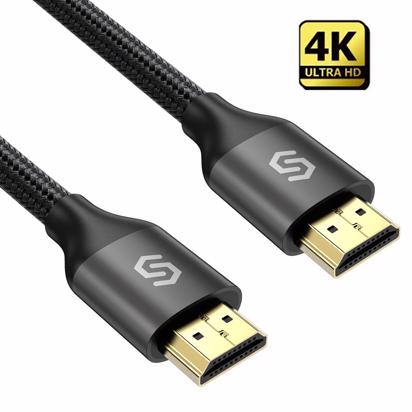The widespread use of HDMI cables has revolutionized the way people watch television and consume media on their devices. HDMI, which stands for High Definition Multimedia Interface, is a technology that allows users to transfer high-quality audio and video signals between devices. HDMI cables have become a standard interface for connecting electronic devices, and they are commonly used in televisions, computers, gaming consoles, and other multimedia devices. In this article, we will explore the benefits of HDMI cables and why they have become so popular among consumers.

HDMI cables have several advantages over other types of audio and video connectors. One of the biggest advantages of HDMI cables is their ability to transfer high-quality audio and video signals without any loss in quality. HDMI cables support high-definition resolutions, which means that users can enjoy crystal-clear images and vibrant colors on their digital devices. This is particularly important for people who enjoy watching movies and TV shows, as it enhances the viewing experience and immerses them in the action.
Another advantage of HDMI cables is their compatibility with a wide range of devices. HDMI cables can be used to connect laptops, gaming consoles, Blu-ray players, and other devices to a television or other display. This makes it easy for users to switch between devices and enjoy their favorite content on a larger screen. HDMI is also backward compatible, which means that users can still use older HDMI cables with newer devices.
The versatility of HDMI cables is another reason for their popularity. HDMI cables support a range of different audio and video formats, including 3D, Ethernet, and ARC (Audio Return Channel). This means that users can connect their devices to a home theater system and enjoy high-quality surround sound. HDMI cables also support advanced features like 4K and HDR, which provide even higher-quality visuals than traditional HD.
HDMI cables are also easy to use and set up. Unlike other types of connectors that require separate cables for audio and video signals, HDMI cables can carry both signals simultaneously. This makes it easy for users to connect their devices to a display and enjoy their content right away. HDMI cables are also plug-and-play, which means that users don't need to install any software or drivers to use them.
Despite their many benefits, HDMI cables are not without their drawbacks. One of the biggest drawbacks of HDMI cables is their length limitation. HDMI cables are limited in length, with the maximum length being around 50 feet. This can be a problem for users who need to connect devices that are further apart than this distance. There are solutions to this problem, however, such as using a signal booster or extender.
Another potential issue with HDMI cables is their durability. While HDMI cables are designed to withstand regular use, they can become damaged over time. This can lead to issues with signal quality or even a complete loss of signal. Users should be careful when handling HDMI cables and avoid bending or twisting them excessively.
In conclusion, the widespread use of HDMI cables has transformed the way people consume media on their devices. HDMI cables offer high-quality audio and video signals, compatibility with a range of devices, and advanced features like 4K and HDR. While HDMI cables are not perfect, their benefits outweigh their drawbacks, making them a popular choice among consumers. As technology continues to evolve, HDMI cables will likely remain the go-to connector for audio and video signals.